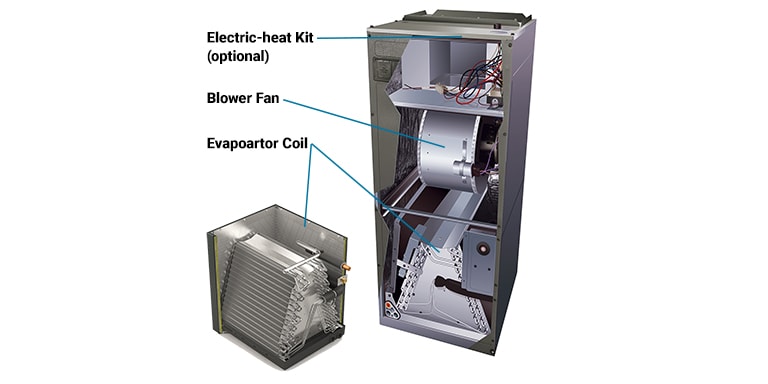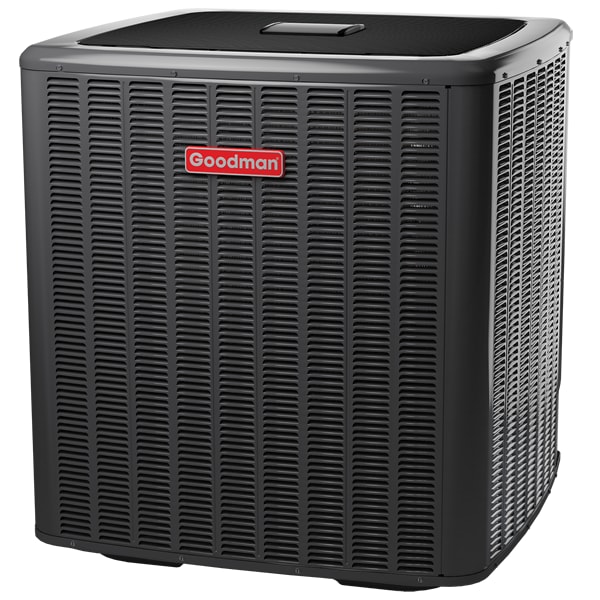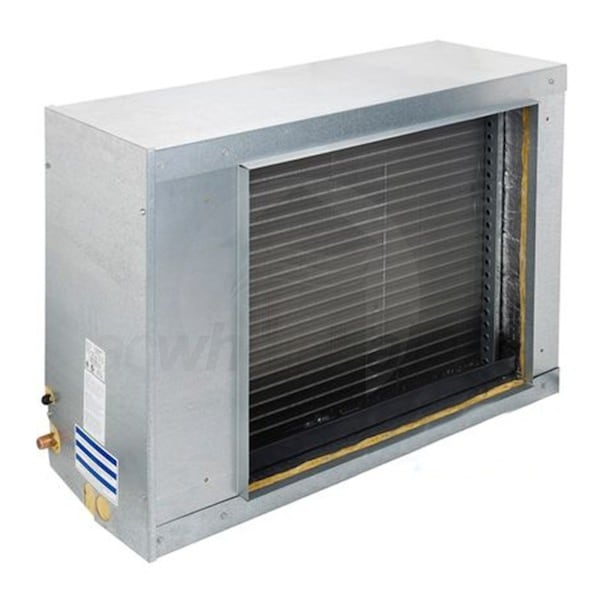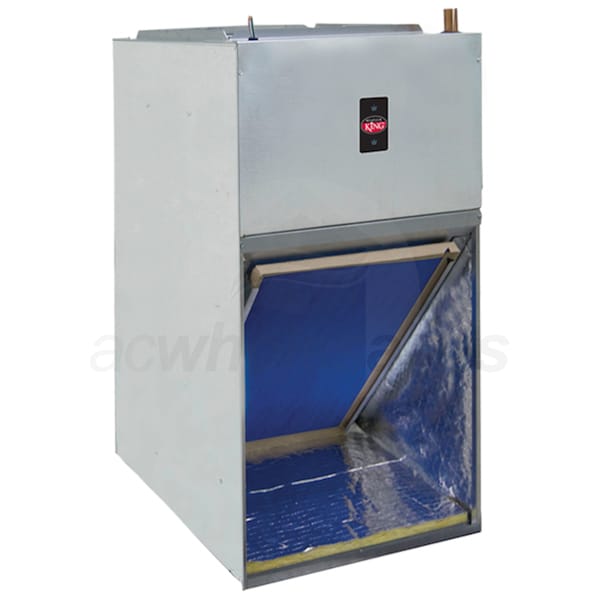
There are many types of heating and cooling equipment out there, but there is one that can be especially confusing depending on where you live-the air handler.
If you live in a warmer climate and don't own a furnace, then using an HVAC air handler is a normal part of everyday life. It's simply the unit that works with your air conditioner and/or heat pump to circulate conditioned air around your home.
Those living in colder climates may confuse air handlers with air conditioners or furnaces. Air handlers can be both. And neither. Wait, what?
Simply put, an air handler "handles air" around the house via ductwork. An air handler is installed inside and works with an outdoor air conditioning and/or heat pump condenser unit to make the air hot or cold.
An air handler is a metal casing containing two main components:

When in cooling mode, the indoor air handler draws in warm air from the home, blows it across the cold evaporator coil to remove heat, and then blows the cooled air throughout the ductwork in the home.
The captured heat travels to the outdoor compressor, where it is then dissipated, and the cold refrigerant returns to the evaporator coil for another cycle.
In heating mode, the air handler works in reverse, acting as a heat pump. It draws in cool air from the home, blows it across the warm evaporator coil, and then blows the heated air throughout the home. The cooled refrigerant travels to the outdoor heat pump, which warms it up again using outdoor heat.
No. An air handler does not contain a burner to heat air like a furnace does nor can it use natural gas or propane as a source to function.
An air handler is also all electric and does not require venting any exhaust outside. The only way an air handler can heat air is by using an outdoor heat pump or by adding an optional electric heat element. This heat element�acts like a toaster, heating air blown past it. The evaporator coil and outdoor unit stay idle during this mode of heating.
 An AC air handler is part of the air conditioning split system, but not the air conditioner itself. When it works together with an outdoor condenser, both units form an air conditioning split system.
An AC air handler is part of the air conditioning split system, but not the air conditioner itself. When it works together with an outdoor condenser, both units form an air conditioning split system.
If you live in a colder climate and have a furnace, that furnace acts as the air handler for your air conditioning system.
Not all air handlers are designed the same. Besides the traditional air handler, there are three other types:
Multi-position air handlers, also known as traditional air handlers, have a higher profile but can be installed in various configurations depending on the application.
Wall-mounted air handlers are shorter and wider than traditional models to fit homes where height is an issue.
Ceiling-mounted air handlers use a coil to move refrigerant instead of ductwork. They are significantly smaller than traditional air handlers and have a very low profile.
Efficiency is what everyone likes to talk about these days. For air handlers, the blower fan, evaporator coil, and outdoor unit all impact efficiency and performance.
Blower fan speed determines how quickly the air moves across the coil, which in turn affects how much heat can be added or pulled from the air in a given time.
If your HVAC air handler has a single-speed or multi-speed blower, then it uses a Permanent Split Capacitor (PSC) motor and the fan is set to a certain speed at the time of installation.
Once set, a multi-speed blower will run at this same speed, regardless of changing conditions. Only an HVAC professional should change your air handler's fan speed after it has been set.
A more efficient option is a variable speed blower, which can adjust speeds in real time depending on flow rates, temperatures, and other factors. It accomplishes this by using an electronically commutated motor (ECM).
 Indoor air handler evaporator coils come in different shapes and sizes. Some are shaped like a slab, while others resemble the letter "A" or "N." In addition to the indoor evaporator coil in your air handler, the outdoor unit, be it an air conditioner or heat pump, also contains a coil.
Indoor air handler evaporator coils come in different shapes and sizes. Some are shaped like a slab, while others resemble the letter "A" or "N." In addition to the indoor evaporator coil in your air handler, the outdoor unit, be it an air conditioner or heat pump, also contains a coil.
The main thing to watch for is that the indoor evaporator coil is sized proportionately to the outdoor coil. If the sizes are mismatched, either the indoor unit won't be able to keep up with the outdoor unit or vice versa. That's why you should always purchase the indoor and outdoor units in a pair.
It's good to know the following efficiency measurements for air handlers:
Both measurements take the indoor and outdoor unit efficiencies into consideration. When you see an efficiency rating, it only applies to matched indoor and outdoor coils.
 You should have your air handler serviced regularly depending on your system and usage. Follow your owner's manual for service frequency.
You should have your air handler serviced regularly depending on your system and usage. Follow your owner's manual for service frequency.
Regular maintenance will include cleaning the air handler condensate drain and coils, lubrication, straightening the coils, and checking the wiring.
You will also need to change your indoor air handler filter every 1-3 months or more, depending on your indoor air quality. The filter is located between the return air duct and the air handler and prevents particles from flowing into the unit. Depending on your air filter's capture rate, you can remove mold, pet dander, and even bacteria from your home's air for healthier breathing.
If you have any further questions about how an air handler compares to other HVAC equipment, please give us a call at (866) 631-6389.
NEXT: View and Shop Air Handlers